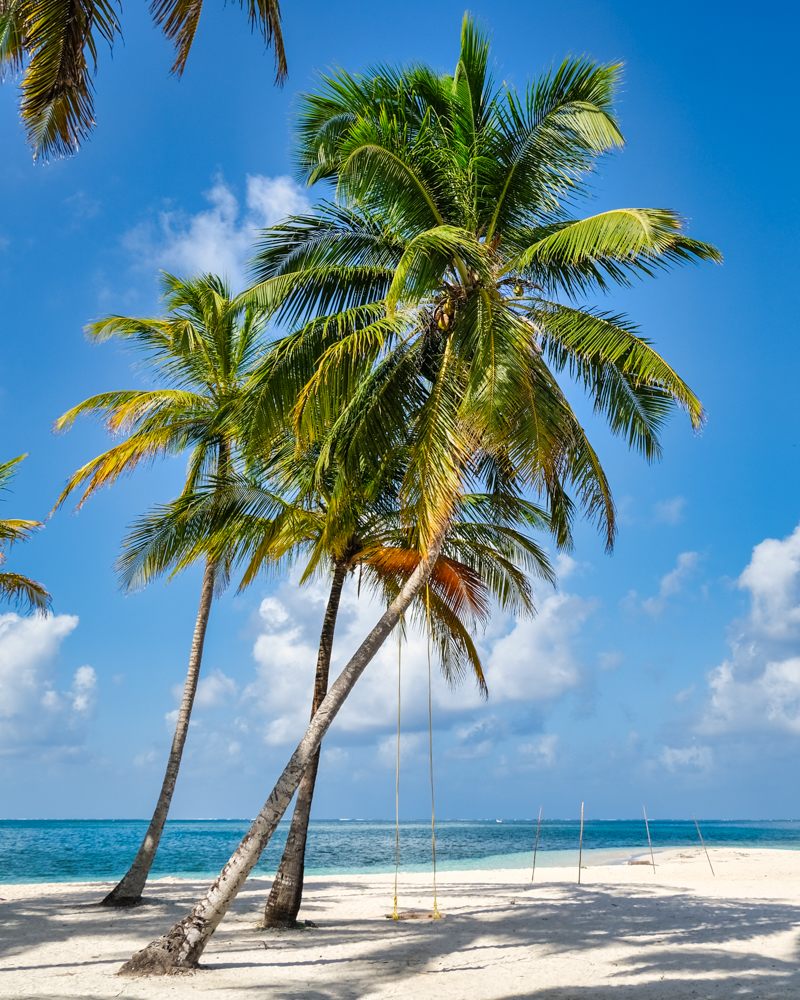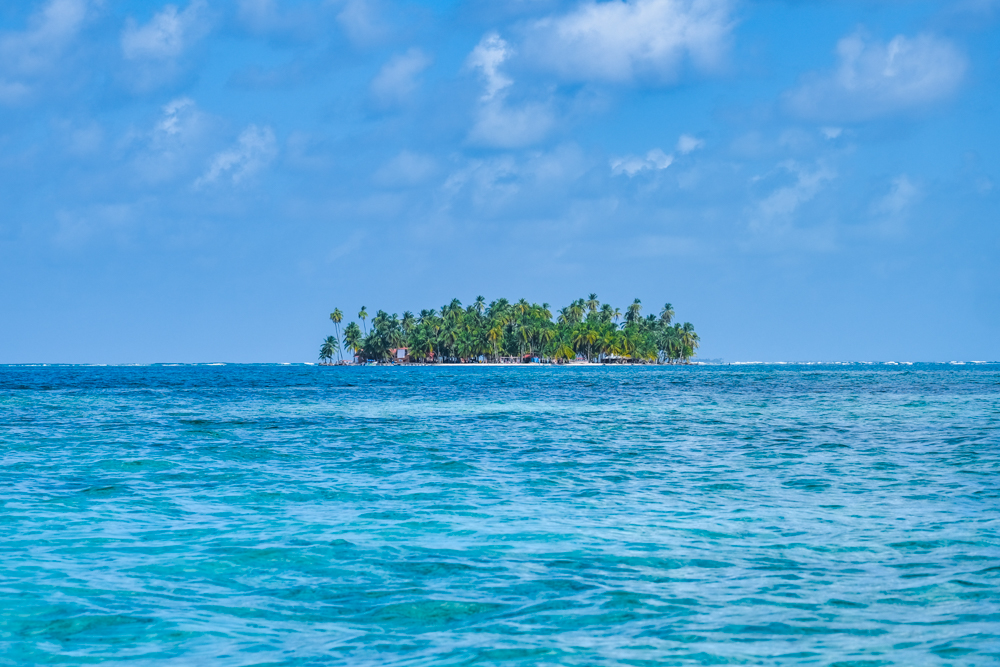Our guide on how to visit the San Blas Islands from Panama City has everything you need for the perfect trip to this idyllic archipelago
When it comes to beaches, we’ve seen some stunners. From remote islands in the South Pacific to indulgent resorts in the Indian Ocean, we thought we’d seen the best of them. And then our little skiff washed up in the San Blas Islands off the coast of Panama.
Here, you will find a blindingly beautiful archipelago that mixes it with the world’s most luxurious beach destinations. During our trip to Central America, we spent a sun-soaked day in this Panamanian vision of paradise.
To help you see it yourself, we’ve put together a guide on how to visit the San Blas Islands from Panama City with the latest information on how to get there, where to stay and what to pack.
What are the San Blas Islands?
Sprinkled across nearly 400km of turquoise water lying off Panama’s Caribbean coast are the islands of the Guna Yala Archipelago, the autonomous comarca (territory) of the indigenous Guna people. More commonly known as the San Blas Islands, the Guna Yala also includes a narrow belt of mainland Panama.
Following the 1925 San Blas Rebellion, the Guna people became the first indigenous group in Latin America to gain autonomy. Ever since, they have managed tourism in the region and therefore benefit directly from the steady stream of visitors to the islands. Tourists must show their passports to cross into the territory and pay a $20 USD entrance fee and a $2 USD port fee. Much of the profits go directly to education, health and land management schemes.

There are 378 islands in the San Blas, of which only around 50 are inhabited. Some are little more than sandbanks with a shack serving as a family home while others contain miniature towns. The latest estimates put the population of the territory at around 50,000 with about three-quarters living on the islands.
There is a handful of accommodation options spread across the inhabited islands which are usually simple cabana-style lodgings offering three meals a day. However, many choose to visit the islands on a day trip from Panama City. Gaigirgordub (El Porvenir) island at the western end of the archipelago is considered the de facto capital as it’s home to government offices, a hotel, a museum and a small airfield with direct flights to Panama City.
More information can be found on the region’s official website.
How to get to the San Blas Islands from Panama City
We visited the San Blas Islands from Panama City on a day tour with San Blas Frontera, a Guna family-run business with over 12 years of experience operating tours to the San Blas. Frontera is staffed entirely by indigenous Guna and runs day trips, overnight stays and island-hopping voyages to the San Blas. Say tours begin at $100 USD per person.
The day starts early with a 5am pick-up from your hotel in Panama City, probably in a four or six-seater 4×4. From there, the initial 1.5-hour drive along the Pan-American Highway to the El Llano junction is comfortable and straightforward.
At El Llano, you’ll take a quick break at a petrol station where you can grab some snacks. From here, it is a bumpy 2-hour drive to the small port, Puerto de Carti. En route, you’ll pause at the regional border where you’ll have to show your passport and pay a $20 USD entrance fee.
At Puerto de Carti, after paying a $2 USD port fee, you will transfer to one of the small skiffs that ferry tourists to and from the islands. This can all feel a bit chaotic with crowds of tourists, but just keep calm and stay out of the sun and, somehow, it will get sorted.
What to expect
Once on the boat, it takes around 30 to 40 minutes to skip across the waters to the first island. Depending on your itinerary, you will usually visit two or three islands or sites. Most of the day is spent splashing around in gin-clear water or lazing on palm tree-lined white-sand beaches with a cocktail in hand.
All itineraries can vary depending on time and conditions. Ours was as follows:
- Isla Pelícano: an idyllic tiny island with a simple cafe serving cocktails and cold drinks. We stayed here for 2-3 hours and ate lunch.
- Piscina Naturales: a natural ‘swimming pool’ in the middle of the sea (45 minutes).
- Isla Perro Grande: another slightly larger island with shower blocks (2 hours).
Lunch is a simple but freshly prepared meal on one of the islands. For us, it was on the first island, Isla Pelícano, but will vary depending on your itinerary. Meals are pre-booked and offer the options of curried fish, chicken or vegetables, served with rice and salad. We encourage travellers to choose the vegetarian option to make the visit more sustainable.
After the final stop, we returned to Puerto de Carti at around 4pm and reversed the process, arriving back at our hotel at around 8pm. Again, the return is a little disorganised and there was a bit of waiting around. We had to change cars for unclear reasons but it all worked out in the end.
It is a long day but completely worth the effort. The islands are utterly paradisical and should be on any Panama itinerary.

What to pack for a day trip
- Passport
- Sunscreen
- Sunhat
- Swimwear
- Cash (some islands take cards but it’s best to carry small bills for drinks or souvenirs)
- Drinking water
- Snacks
- A change of clothes
- Sandals or flip-flops
- Dry bag
- Snorkelling gear
- Rash guard
How to minimise your impact
The Guna work hard at minimising the effects of tourism on their land and visitors should do the same. The low-lying islands are at risk from climate change and many of the islands’ resources – from lobsters to coconuts – are vulnerable. Please follow a few basic guidelines when visiting.
Take all your rubbish home with you. Better still, don’t take any in to begin with. It’s tempting to take plastic-wrapped snacks with you but where possible, opt for biodegradable packaging or take items with you in containers. Do not use single-use plastic such as straws or bottles during your visit.
Look but never touch. This should go without saying but we have witnessed even dive instructors breaking this golden rule. This includes starfish, tropical fish and coral – which is incredibly delicate.

Always ask before taking photos of people. Read our guide on photographing local people.
This isn’t the Caribbean like you may know it. There are no resorts in the San Blas Islands, so don’t expect the five-star treatment you may associate with the Caribbean.
When the sun goes down, the electricity will often go off and even during the day it can be intermittent. There almost certainly won’t be wifi at your lodgings (although you may get phone reception) and saltwater showers are not uncommon. On the flip side, unlike much of the Caribbean, you may well find you have a beach – or even an island – all to yourself.
Finally, always ask before taking a coconut. They are among the region’s most valuable commodities.
When to go to the San Blas Islands
The best time to visit the San Blas Islands is during the dry season, from January to May. That said, the islands are a year-round destination with a tropical monsoon climate and temperatures that rarely drop below 20°C.
The rainy season runs from June to December receiving around 200mm of rainfall per month. However, this usually comes in short downpours which often clear up quickly. The sea can be choppier around this time due to higher winds and the occasional passing Caribbean hurricane further out to sea.
Make it longer
While we loved our day trip to the San Blas Islands from Panama City, it is a long day. Ideally, we would have spent at least one night on the islands. If you have the time, we recommend taking a longer trip.
Here are some options:
Where to stay in Panama City
We stayed at Sortis Hotel, one of the Marriott’s Autograph Collection of independent hotels. Rooms in the ultramodern downtown hotel have floor-to-ceiling windows with sweeping views of Panama City. The contemporary hotel has an outside pool (also with skyline views), restaurant, coffee shop, bar and lounge.
The hotel is a 15-minute drive from Casco Viejo, the UNESCO-listed historic centre with its rainbow-hued buildings, colonial churches and cobblestoned avenues. It is also home to the country’s best cafés, bars and restaurants. The Miraflores Visitor’s Center for the Panama Canal is 30 minutes away.
Enjoyed this post? pin it for later…

Lead image: Atlas & Boots
Autor: Atlas & Boots
Fuente de contenido







